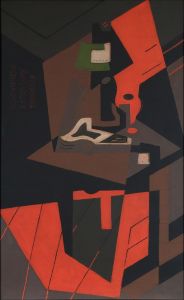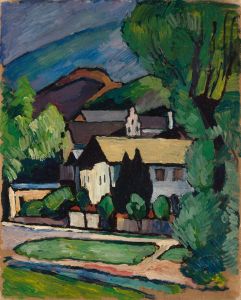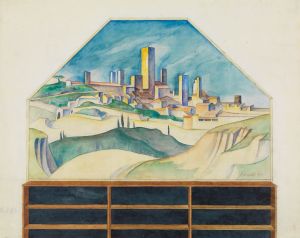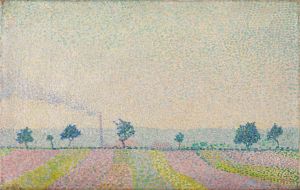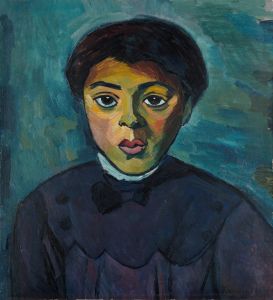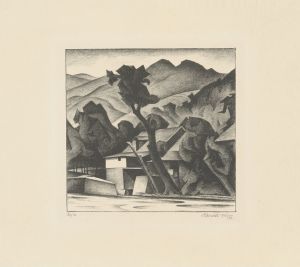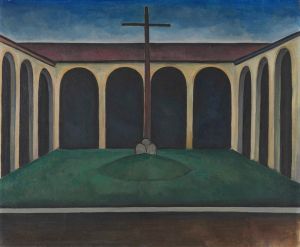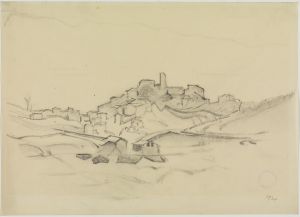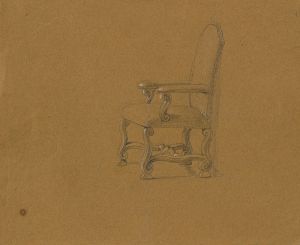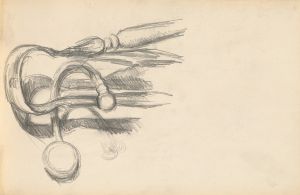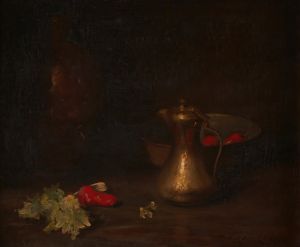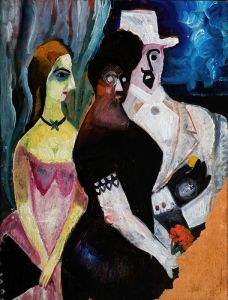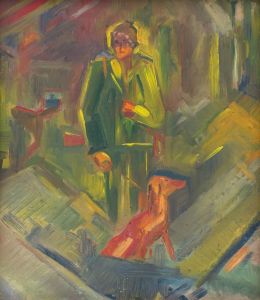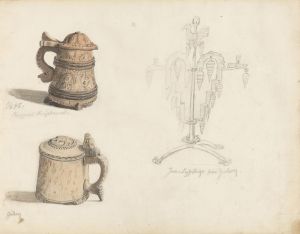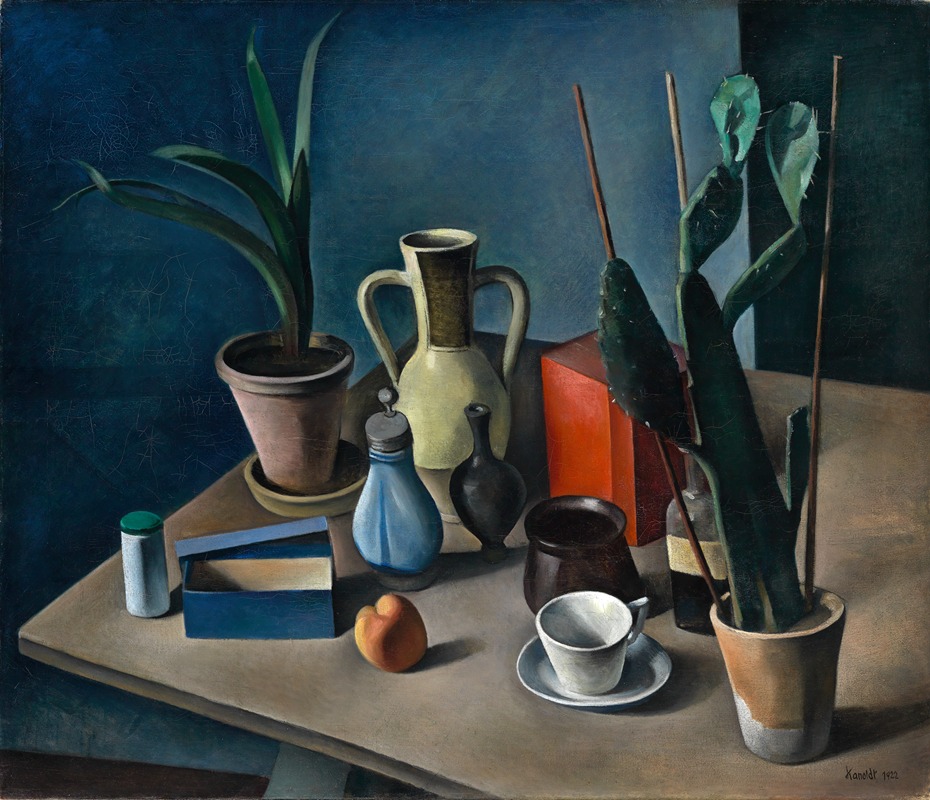
Grosses Stilleben mit Krügen und roter Teedose
A hand-painted replica of Alexander Kanoldt’s masterpiece Grosses Stilleben mit Krügen und roter Teedose, meticulously crafted by professional artists to capture the true essence of the original. Each piece is created with museum-quality canvas and rare mineral pigments, carefully painted by experienced artists with delicate brushstrokes and rich, layered colors to perfectly recreate the texture of the original artwork. Unlike machine-printed reproductions, this hand-painted version brings the painting to life, infused with the artist’s emotions and skill in every stroke. Whether for personal collection or home decoration, it instantly elevates the artistic atmosphere of any space.
Alexander Kanoldt's Grosses Stilleben mit Krügen und roter Teedose (translated as Large Still Life with Jugs and Red Tea Caddy) is a notable example of the artist's contribution to the New Objectivity (Neue Sachlichkeit) movement in early 20th-century Germany. Painted in 1925, this work exemplifies Kanoldt's meticulous attention to detail and his focus on clarity, precision, and the materiality of objects, hallmarks of the New Objectivity style.
The painting features a carefully arranged composition of everyday objects, including ceramic jugs, a red tea caddy, and other household items, placed on a flat surface. The objects are rendered with sharp precision and a sense of stillness, emphasizing their physical presence and texture. Kanoldt's use of muted tones and controlled lighting creates a serene yet slightly detached atmosphere, characteristic of the New Objectivity movement's approach to still life. The red tea caddy, a striking element in the composition, provides a focal point and a subtle contrast to the otherwise subdued color palette.
Kanoldt, born in 1881 in Karlsruhe, Germany, was initially influenced by Impressionism and Post-Impressionism but later became associated with the New Objectivity movement in the 1920s. This movement emerged as a reaction against the emotional and expressive tendencies of Expressionism, favoring a more realistic and objective representation of the world. Kanoldt's still lifes, including Grosses Stilleben mit Krügen und roter Teedose, reflect this shift, showcasing his interest in the precise depiction of objects and their spatial relationships.
The painting is often noted for its geometric composition and the almost photographic quality of its execution. Kanoldt's approach to still life was influenced by his background in architecture and his interest in perspective and structure. The arrangement of objects in Grosses Stilleben mit Krügen und roter Teedose demonstrates a careful consideration of balance and proportion, inviting viewers to contemplate the formal qualities of the work.
Today, Grosses Stilleben mit Krügen und roter Teedose is considered an important example of Kanoldt's oeuvre and the New Objectivity movement. It reflects the cultural and artistic shifts of the Weimar Republic era, during which artists sought to reconcile modernity with a renewed focus on realism and craftsmanship. The painting is held in a private or institutional collection, though specific details about its current location are not widely documented.
Alexander Kanoldt continued to produce still lifes and landscapes throughout his career, but his association with the New Objectivity movement remains a defining aspect of his legacy. Grosses Stilleben mit Krügen und roter Teedose stands as a testament to his skill as a painter and his ability to capture the quiet beauty of everyday objects with precision and restraint.





